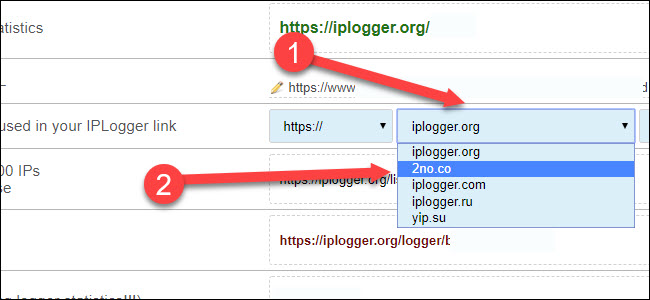How to track ip address via link
How to track ip address via link
after getting a lot of requests from our users, we decided to post this article about how to hack
We have already posted an article about how to use and Installation of some Hacking Tools, if you have missed that article then
You Can Read It here:
Where is the person you’re talking to located? Are they who they say they are? To check, you can have that person click a special link. You’ll see their IP address, and that will tell you their rough location.
How IP Tracking Links Work
We recently played along with a fake job recruiter scam. We knew at the start this was a scam, but we wanted to confirm the scammer’s location. They said they were in the US—but were they? We checked by tracking their IP with a link.
There’s nothing special about this—when someone accesses a resource online, the server sees their unique IP address. And IP addresses are tied to rough geographic areas. But popular web services don’t usually show you the IP address of that person, although you could certainly see it yourself if you were hosting your own web server. The method here uses an online service that “wraps” a real link for you, tracking the IP address that accesses it before quickly sending the person to the real target of the link.
This has its limitations. Anyone can use a VPN to mask their real location. But, even if they are, there’s a good chance the VPN will show a different location from where they claim to be. In the case of our fake job recruiter, the scammer claimed to be in the US, but they accessed our link from an IP address based in Nigeria.
If you don’t already know the location someone claims to be from and are just trying to figure out whether they’re genuine, you’ll need to convince the person to say where they are before sending them the link. Working that into conversation shouldn’t be too tricky, the nature of the internet makes asking for location a routine part of an online discussion—does anyone else remember A/S/L?
Once you do, you’ll need to prepare a digital file to send them. A picture, a Word document, or anything you can attach to a cloud storage link will do. If you’re dealing with a possible scammer, that scammer might ask you to send them something as part of a scam. If you’re dating online, you might want to send a photo. Once you’re ready to send a file, you’ll need to wrap that normal link with an IP tracking service.
Unfortunately, that process creates a link that’s obviously for tracking. You’ll need to use another service to hide that. You probably don’t want the other person to spot your trick.
How to Create a Disguised Tracking Link
You can use a link to any web page online, but this process will guide you through creating a link that goes to one of your files or photos.
The first step is to upload your file to a cloud service like Dropbox or Google Drive. If you suspect the person you’re interacting with isn’t trustworthy and you don’t want to give any personal information away, it’s a good idea not to use any main account you have. You may want to create a second “throwaway” account if you don’t already have one.
With your file uploaded, use the website to create a shareable link. In Google Drive, you can right-click on the file and choose “shareable link.” In Dropbox, hover your mouse over the file and select share.
This is the link your suspected scammer will land on at the end of the process. But don’t give this link to them. By itself, it tells us nothing.
Instead, go to the IP logger website and paste your URL into the “URL and Image Shortener” field. Click the “Get IPlogger code” button below it.
The next screen will give you an “IP logger link for collecting statistics” and “link for viewing statistics.” Copy the “viewing statistics” link to a safe spot. This is what you’ll use to see the person’s IP address and location afterward.
The link for “collecting statistics” is the one with IP tracking in it. Unfortunately, that “iplogger.com” link will be a dead giveaway to your recipient.
To hide what you’re doing, you can use a URL shortening service. Unfortunately, those shortening services don’t like the IP Loggers URLs and generate errors. To get around this, click on the iplogger.org drop-down to the right of “Select a domain name” and choose “2no.co” for your domain. The tracking link at the top will update, copy that new link.
Next, go to bit.ly—you can try another shortening service if you prefer, but we tested with Bitly. If you don’t already have an account, create one.
Click the “Create” button in the upper right-hand corner of the Bitly website.
Paste your 2no.co tracking link into the “Paste long URL” box and click the “Create” button.
You now have a Bitly link you can give to your potential scammer. You can click the copy button to retrieve it quickly.
How to See the Recipient’s IP Address
Send that link to the person you’re talking to as you would a standard link. After you have, go back to IP logger, copy the viewing statistics link, and paste it into your browser.
You’ll see a list of any IP addresses that accessed the link, what location they’re from, and possibly what browser they’re using.
Remember, this won’t tell you everything. If the person is using a VPN or similar technology, you won’t see their true location. But it’s one more tool in your arsenal to spot people who aren’t who they claim to be. If your tracking results show a different country than you’re expecting, be wary and consider walking away.











Comments
Post a Comment